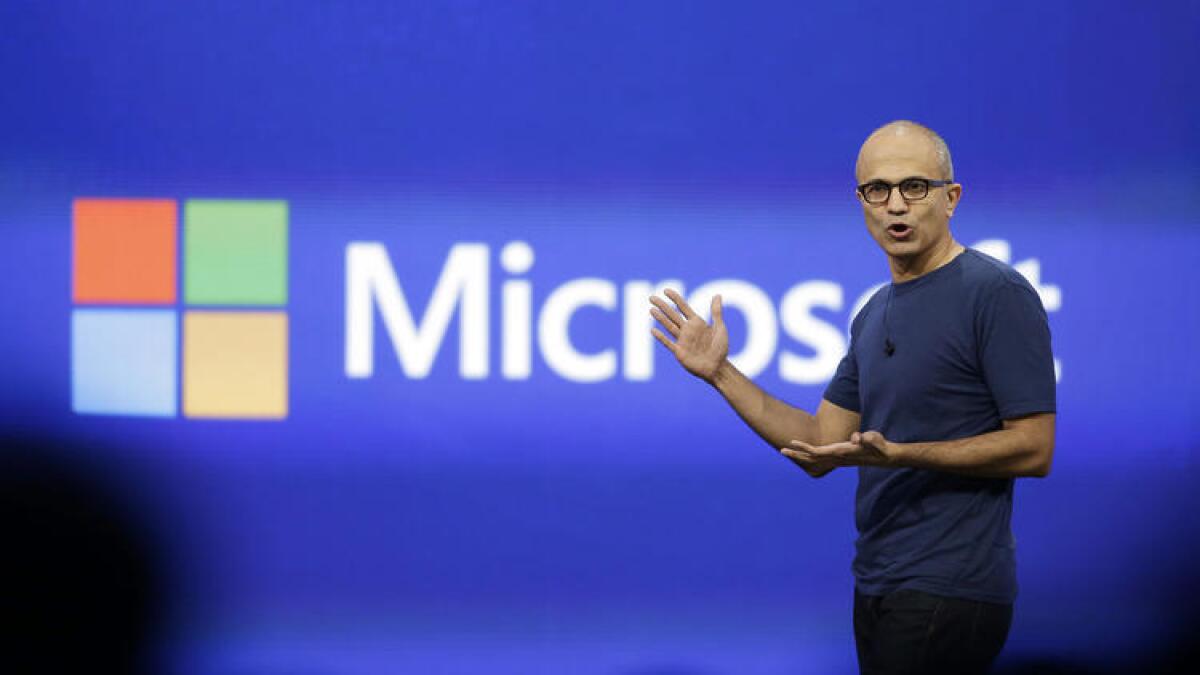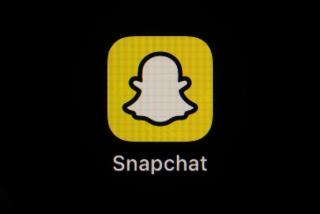Microsoft to lay off 6% of its workforce, scale back cellphone business

Microsoft CEO Satya Nadella delivers the keynote address of the Build Conference in San Francisco last year.
Microsoft maintains big ambitions for Office, Bing, Skype and its other apps, but it’s minimizing a once heady quest to get vast numbers of people to use the software on Windows smartphones.
The Redmond, Wash., technology giant announced Wednesday that it would fire up to 7,800 people in the coming months.
The bulk of the cuts will come from offices in Finland and Brazil, but include at least 129 people from a San Diego office that’s being closed, according to a person familiar with the plans. Among the San Diego layoffs coming by summer’s end are 28 senior software development engineers, 18 senior program managers and seven senior hardware engineers, Microsoft said in a state filing.
The 6% cut to Microsoft’s workforce caps a series of moves by Satya Nadella since taking over as chief executive last year to rethink how Microsoft can compete as a distant No. 3 to Apple and Google’s Android operating system in the smartphone wars.
With fewer than 3% of the world’s new smartphones operating on Windows, according to IDC, seeing someone with a Windows-based phone has become as rare a sight as rain in California. Developers have little to reason to build apps for them, and without many popular apps, users have avoided them too.
The company will continue designing, manufacturing and selling Microsoft Lumia phones, but on a much smaller scale.
Nadella’s decision serves as a rebuke to the 2013 purchase of Nokia’s phone business under the watch of Steve Ballmer, his predecessor as CEO. The price was more than $9 billion.
Microsoft now plans a $7.6-billion write-down on the purchase. Both Microsoft and Nokia were late to adjust to a customer shift away from desktops and flip-phones to tablets and smartphones, and Ballmer saw a partnership as a better way to compete with Apple.
Combined with 18,000 job cuts announced a year ago, Microsoft will be left with only about a fifth of the 30,000 people it absorbed after the buying Nokia.
Nadella’s way forward: Make Microsoft’s own apps more freely available on Apple and Android devices while introducing a simple process for developers to turn Windows computer programs into Windows smartphone apps. On Wednesday, Nadella said the company’s phone-making efforts would be trimmed to focus only on areas where it has seen strong sales.
In a message to employees, Nadella said that shriveling the phone unit would in the near-term produce better products faster while the company moves away from a stand-alone phone business toward “a strategy to grow and create a vibrant Windows ecosystem.” The transition has led to changes as high as executive vice president, with former Nokia Corp. CEO Stephen Elop also leaving Microsoft soon.
The move was welcomed by many investors but left some scratching their heads. Brent Thill, an analyst at UBS Securities, said several institutional investors queried him Wednesday — not on why the layoffs had been made, but why it took Nadella so long to wipe away something analysts said he never wanted.
“They gave it some time, but it really has been an underperformer,” Thill said. “You grow businesses and then you grow margins, and if not, quickly get out of it. Microsoft has reiterated that mantra to me several times.”
Annual phone-division spending had already been trimmed to $2.5 billion from $4.5 billion with help from last year’s cuts, Microsoft Chief Financial Officer Amy Hood told analysts in April. Even so, Microsoft was expected to miss its goal of a profitable phone business by June 2016. Even if it were successful, the phone business delivers relatively low margins for just about everyone but Apple.
“Nokia has been a huge operating drag, and this will relieve some of that strain,” he said.
Microsoft shares fell 6 cents on the news to $44.24.
What remains of the phone group will concentrate on devices that are affordable in developing countries, have strong security controls for businesses or double down on the favorites of what few fans there are of Microsoft Lumia smartphones.
Analysts pointed to business customers as an area of particular interest because the release of Windows 10 at the end of the month means that companies could switch to new Windows computers and smartphones in one easy sweep. But getting businesses to buy in while Microsoft retreats from the business could be a struggle.
The way Microsoft will truly make money from the global shift to mobile devices is by taking Microsoft apps across devices, regardless of who’s making them, analyst Thill said. He noted that a senior technology executive at another firm recently remarked that his favorite iPhone app is now the Microsoft Outlook email app.
“That would have been unheard-of three years ago,” Thill said. “They are pursuing the strategy of it doesn’t matter what device the software is on, and that’s what’s working.”
Some Microsoft smartphone users were glad to see Microsoft hasn’t completely thrown in the towel.
Christo Garza, 28, a Starbucks manager in Houston, said he began using Lumia four years ago, finding the dynamic Live Tiles screen on it a “fresh break” from “boring” home screen icons on other phones.
“If they completely stop producing Lumia devices, or some other line of Windows phones, I would be very upset,” he said.
paresh.dave@latimes.com
Times staff writer Daina Beth Solomon contributed to this report.







